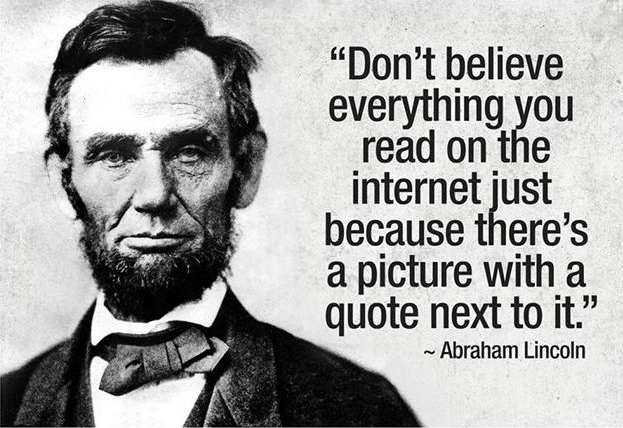Being able to evaluate how trustworthy a source is has been a necessary skill ever since the development of language millennia ago. For a brief historical moment before the internet, we had the advantage/disadvantage of having sources prescreened by publishers and other gatekeepers. On the internet, we have to be able to find other ways to evaluate trustworthiness, and this post will talk about some of them.

Caveat Surfer
Just as any computer powerful enough to be worthy of the name can be hacked, any system for discriminating between truth and fiction can also be hacked.
There is no silver bullet for dealing with disinformation.
Tools for checking potential bias
The word bias has come to include among its senses a meaning along the lines of ‘deviating from the middle-of-the-road of general opinion.’ This differs somewhat from the term’s original definition of leaning in a direction that is “off” in some way, in particular, taking positions that systematically differ from what available evidence implies. The first definition worries about deviation from the center of the Overton Window; the second worries about deviation from humanity’s current state of knowledge (as a proxy for what the actual truth is). However, the first is relatively simple to test for while testing for the second is quite difficult.
The first definition can still be useful as a flag indicating the kinds of bias you might need to be alert for from a given source. Fox News predictably leans to the right; The Guardian predictably leans to the left; USA Today predictably leans to the center. This doesn’t mean that USA Today is more likely to be accurate than either of the other two examples (to conclude that would require demonstrating that the two definitions of bias given above had the same meaning), but it lets you know the potential blind-spots each of the three outlets will have and which directions you might have to look in to find evidence they might have ignored.
There are tools and methods for finding information on where a site’s opinions tend to land. These tools and methods can also (sometimes) give you information about a site’s general trustworthiness (getting at the second definition of bias).
Library guides to the politics held by a site’s operators
The University of Michigan Libraries have an online research guide that lists where some media sites tend to fall in a left-right political dimension. The guide also links to sites that have more extensive lists along the same lines.
Web of Trust
Web of Trust (WoT) is a service that relies on community ratings of reliability to generate a score for a site’s reputation. The score itself is most useful with regard to evaluating whether a site might install viruses or other malware on your computer. With respect to trustworthiness of news sites, say, it is very much subject to the hacking described in the Caveat above. Even so, the comments users leave on sites can help you by letting you know what reasons people have for finding the site to be either useful, toxic, or somewhere in between.
If you find WoT useful, they have a browser plugin/extension to better integrate it with your web surfing.
Wikipedia
If you are interested in finding out who started a media site in the first place or who owns and operates it now, a search in Wikipedia can often yield that information.
Because of how Google’s algorithms work, a Google search will generally have a relevant Wikipedia article among the results on the first page. So, for example, searching on “who owns ranger rick” (without the quotation marks) has the Wikipedia article on Ranger Rick as the top result (in this case with a Google-produced headline of “United States National Wildlife Federation,” the owner and operator).
Fact checking sites
There are many websites that take claims made by people in the news or that are “in the air” (often referred to as memes) and look more deeply into the claims to determine how much of them is true and what they exaggerate, misrepresent, or leave out entirely. These sites have an advantage over general news sources of being able to focus on the specific factual basis for claims, but like any other source, they have to be interrogated for the biases they might hold.
Jennifer Snelling has a recent article on the International Society for Technology in Education’s website (“Top 10 sites to help students check their facts“) listing some fact checking sites together with descriptions that can help with seeing what biases those sites might have.
Banner image credit:
Baptistry, Duomo and Leaning Tower at Pisa by Rauschenfels von Steinberg
License: Public Domain
This is a faithful photographic reproduction of a two-dimensional, public domain work of art. The work of art itself is in the public domain in its country of origin and other countries and areas where the copyright term is the author’s life plus 70 years or less.

